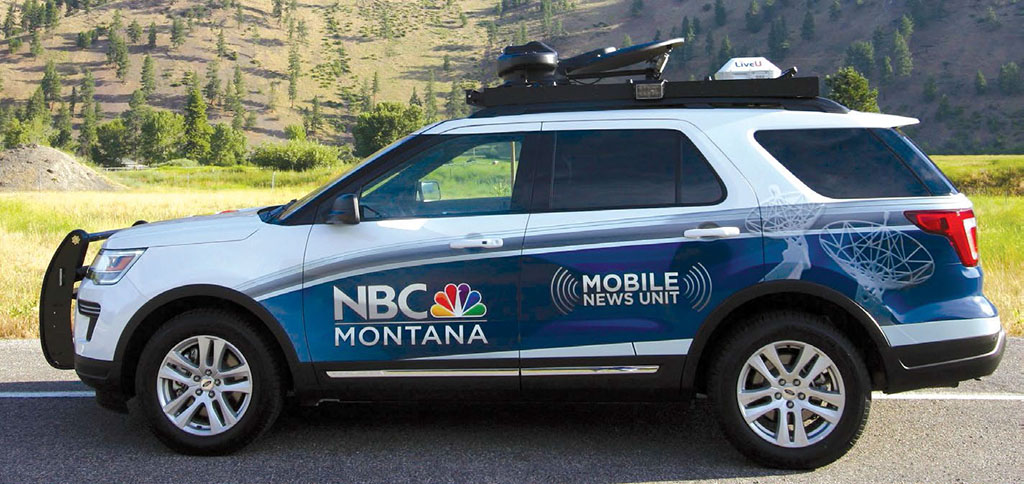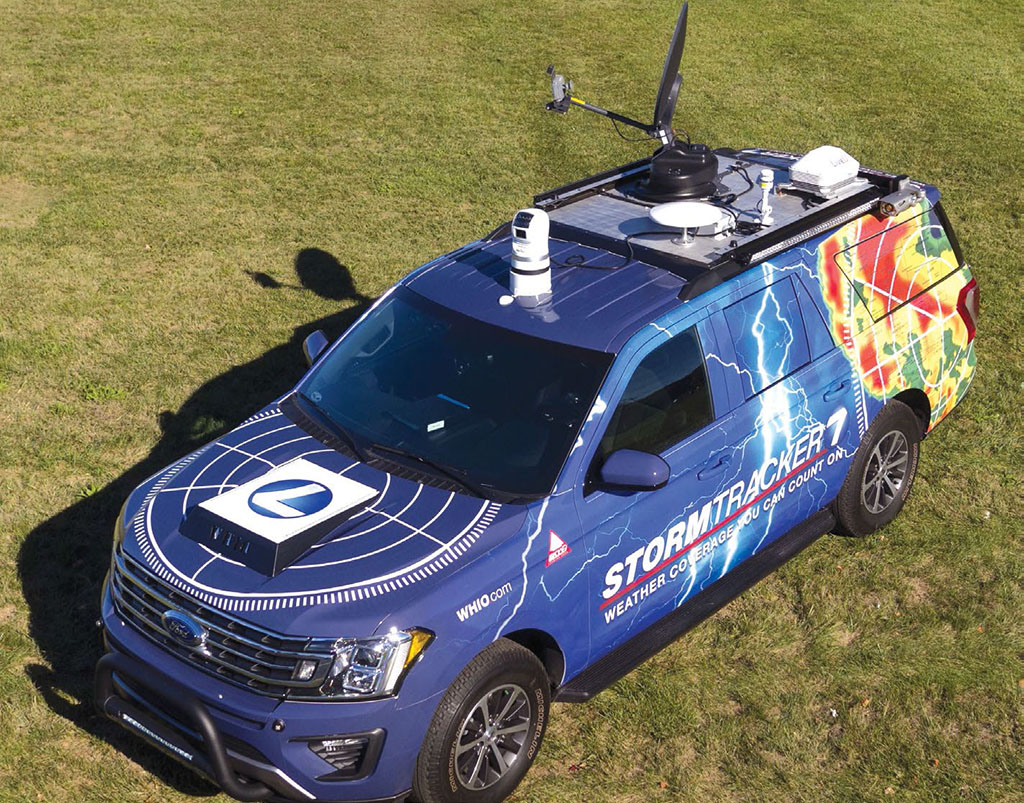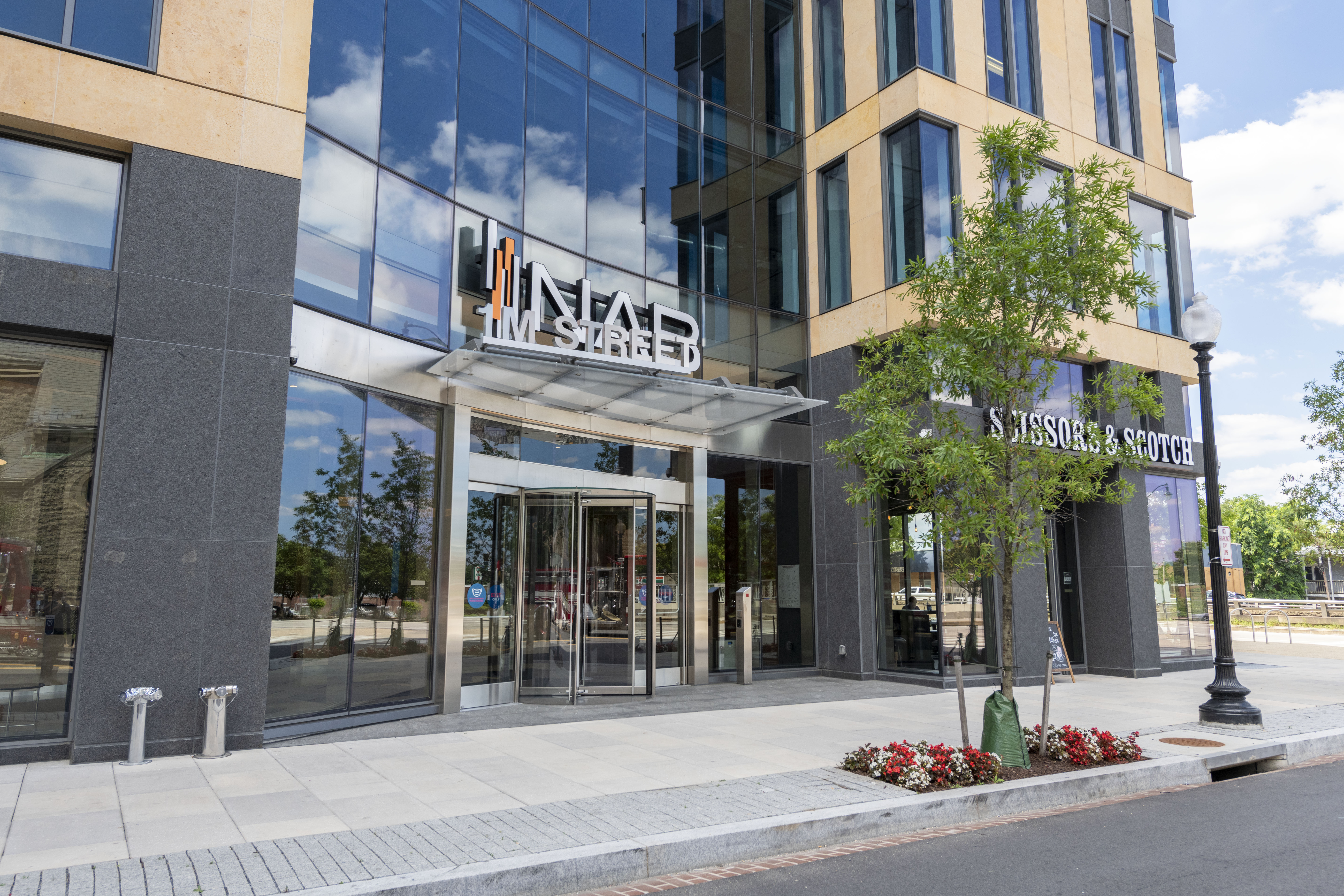Vans: More Than Just About Equipment
SEATTLE—The death of the ENG van market has been predicted, by this writer and others, for at least 10 years. The thinking has been that portable bonded cellular liveshot equipment would make live trucks unnecessary.
A look around the marketplace shows several news truck builders busy as ever, though most of their vehicles are not the behemoths of the past.
STILL NEED A WORKSPACE
“The death of ENG vans hasn’t happened,” said Tom Jennings, president of Accelerated Media Technologies (AMT) in Auburn, Mass. “The ENG vans have evolved from what they were a few years ago. They’ve gotten smaller, and lighter, and they’re primarily SUV based.”
A live truck does more than just carry equipment, according to Stephen Williamson, director of sales at Frontline Communications in Clearwater, Fla. “You still need a workspace. If you’re on a story all day, you need a workspace out of the weather. There’s still quite a demand for live trucks.”
Jennings said microwave-equipped news trucks are on the decline. “Even as the IP microwave systems have started to proliferate, television stations and networks are looking at microwave and the high cost of infrastructure, high cost of maintaining that infrastructure,” he said. “Although cellular bonding costs are high, they’re not as high as maintaining an entire infrastructure of microwave.”
One of AMT’s recent news vans was built for Savannah, Ga.’s ABC affiliate, WJCL-TV. “The truck is a small format, K150 van that’s minimal,” said Jennings. “It’s got racks that are MVP Power System, and it’s got a TVU cellular bonding system in it. And that’s the entire truck. There are maybe five pieces of equipment in it, in the entire truck.”
Bonded cellular connectivity doesn’t work everywhere so KA and KU satellite systems, with small dishes can fill in those gaps.

Another new AMT truck with both cellular and satellite connectivity was built on a Ford Explorer for KECI in one of America’s smallest television markets, Billings, Mont.
“Montana is one of those areas where there is no infrastructure and there is very limited microwave,” said Jennings. “There’s almost no cellular, probably less than 50 percent of the state. So this truck combined a cellular bonding system with a KA band satellite dish and electronics. When they had the wildfires this past summer, this truck could go places that no other station in the market could go, and they’re getting unbelievable coverage up there and unbelievable connectivity.”
CALL IN THE MONSTER
As the recent hurricanes and resultant flooding have illustrated, sometimes it takes more than a standard live truck to do the job. Call in the Monster Truck.
Frontline built just that for Houston’s KTRK on an F250 crew cab pickup truck, including a three-inch lift kit and a customer modular body on the bed.
“We wanted the truck bed to serve as a mount for the IP over KU antenna system,” said Williamson. “It also serves as a storage area for a full length, 500-pound capacity slide out tray. That provides great storage for cable reels, cameras and grip gear that they need to use. We also installed a roof rack to hold the, support the bonded cell antennas and the LED lighting for exterior illumination.” A Dejero EnGo system provides cellular connectivity.
There are two cameras in the front passenger seat: one aimed out the front of the truck, and one aimed at the passenger seat, according to Jeff Steel, engineering manager for Frontline. “That allows the news crew to do reports while the truck is being driven,” he said. “There’s a handheld controller in the front seat that allows them to switch between the two cameras. So that they know which camera is on-air, there are two monitors also in the front seat.”
Steel pointed to a lesson learned by some of those covering the Las Vegas mass shooting, when truck-mounted cellular live gear was not easily removed from news trucks. “That story went very mobile and some of the trucks were locked in a parking lot. They had a need to get out of there but weren’t able to do that.” The EnGo system on KTRK’s truck can be quickly removed and deployed on the back of a portable video camera for run-and-gun coverage.

ENG vehicles can also be engineered to be more than liveshot platforms. More and more stations are adding state of the art weather equipment like WHIO-TV in Dayton Ohio, which recently launched its Storm Tracker 7.
The weather gear includes a weather station to read current conditions, live Doppler Radar access for storm tracking in the field, access to multiple forecast data models and weather display graphics. It feathers six cameras for a 360-degree view of live, real time, driving conditions, and connectivity from a satellite dish and LiveU. For an eye in the sky, the vehicle provides a drone launch pad.
“Our Storm Center 7 meteorologists have their own live Doppler Radar allowing them to give information minutes faster than others, said Cox Media Group Ohio Market Vice President Rob Rohr said. “With the launch of our new Storm Tracker 7, we can be in the field forecasting and tracking the weather to get even more information about how to keep you and your family prepared and out of harm’s way.”
Not all those who used to build live news trucks for TV station are still in the business. Fred Gerling, president of Gerling and Associates in Sunbury Ohio, said that building remote broadcast trucks for the television business laid the foundation for its current business of building vehicles for local marketing, mobile medical, and mobile command.
“The reason we’ve been so successful there is because we cut our teeth and learned how to do this industry on television trucks,” he said. “Believe me, that is the most difficult clientele that there is to take care of.”
TV news vehicles don’t necessarily end up on the scrap metal pile.
“There does seem to be a place for microwave and uplinks in certain applications, outside the news business,” said Mark Chapman, owner of used equipment dealer Allied Broadcast Group. “There are needs where the satellite frequencies and the microwave frequencies serve and work better, be it in certain weather situations, or in certain geographies, or if there is not a good cell service to tap into. We’ve got people from out of the country who call us about some of these vehicles. We have a client in the Caribbean who bought two uplink trucks from us last year.”
Get the TV Tech Newsletter
The professional video industry's #1 source for news, trends and product and tech information. Sign up below.
